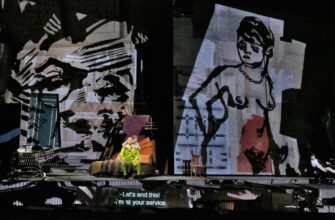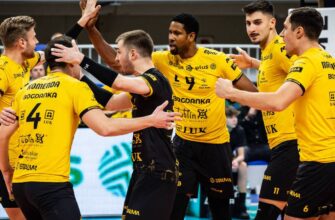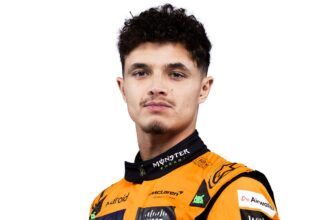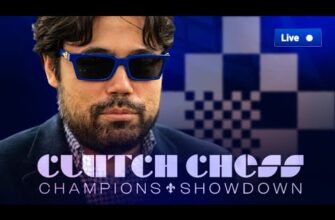MONACO — Formula 1`s attempt to improve racing at the Monaco Grand Prix by mandating a second pit stop ultimately reinforced a long-known fact: the historic circuit`s narrow confines make genuine competition exceedingly difficult.
While adding a compulsory second stop was never going to fundamentally change the track`s limitations, it did aim to offer a strategic dynamic. It arguably made the race more engaging than the previous year, but with a mere single legal overtake occurring over 78 laps, the core issue with Monaco as a racing venue remained glaringly obvious.
Reigning champion Max Verstappen was blunt in his assessment. “You can`t race here,” he stated after finishing fourth. “It doesn`t matter what you do; one stop, 10 stops. Even at the end, I was in the lead, my tyres were completely gone and you still can`t pass. Nowadays with an F1 car, you can only pass an F2 car around here. I get [the mandatory two-stop strategy], but I don`t think it`s worked.” He jokingly added, “We were almost doing Mario Kart. We have to install bits on the car and maybe you can throw bananas around! Slippery surface!”
The effectiveness of the two-stop rule as an experiment was a point of contention post-race. George Russell, who spent a significant portion of the event stuck behind the two Williams cars, felt it added nothing worthwhile. “We definitely need to have a real think about what the solution is here in Monaco,” Russell commented. “I appreciate trying something this year for two stops, but clearly it did not work at all.”
There was a degree of tension in the closing laps due to strategy variations. Verstappen, who had only completed one of his two required stops late in the race, clung to position hoping for a timely accident that would trigger a red flag, allowing him a `free` pit stop to retain the lead and potentially snatch victory. This strategy added some intrigue to the final 20 laps, even though the anticipated dramatic twist never materialized.
Red Bull team principal Christian Horner viewed the change as an improvement. “I would say it was an improvement, it was strategically more interesting, there was more jeopardy to it,” he said. “Certainly better than last year where there was just a procession, but the fundamental problem is you cannot overtake here and you can drive around three or four seconds off the pace.”
For Lando Norris in the victorious McLaren, who followed a relatively standard strategy with stops on laps 19 and 50, it was a stressful experience. Despite having the quickest car and executing a near-perfect race, he faced the constant risk of his potential maiden Monaco win being jeopardized by an unfortunately timed red flag affecting pit stop windows. “It made it a lot more scary for me,” he admitted, expressing a preference for a single stop which would have been “a lot more chilled.” He acknowledged, however, that rules are designed for spectator entertainment rather than driver comfort.
The lack of overtaking also fostered different issues in the midfield, where teams exploited the strategy to use their drivers in tandem. The car running behind would deliberately slow down the cars following it, creating a significant gap for the teammate ahead to pit and rejoin without losing track position.

This tactic was notably initiated by Liam Lawson while running ninth, three positions behind his Racing Bulls teammate Isack Hadjar. By consistently lapping two to four seconds slower than Hadjar, Lawson held up the quicker Williams and Mercedes cars. This enabled Hadjar to complete his mandatory pit stops on laps 14 and 19 and still emerge ahead of Lawson and the trailing pack. Hadjar did lose a place to Lewis Hamilton during this process, but the superior pace of the Ferrari over the Racing Bull meant this was a potential outcome regardless of the tactic.
Williams, unable to use the performance advantage of their cars to pass the Racing Bulls, then felt obligated to employ similar tactics to keep the Mercedes drivers, Russell and Kimi Antonelli, behind.
From laps 25 to 40, Carlos Sainz deliberately drove multiple seconds off the pace of his teammate Alex Albon ahead. This created the necessary gap for Albon to make his two pit stops on laps 32 and 40. Once Albon had finished his mandatory stops, he allowed Sainz through on lap 43. Sainz then reciprocated by holding up the Mercedes drivers, allowing Sainz to complete his own stops on laps 48 and 53 without losing position to them.
Russell grew tired of this tactical delay by Lap 50 and cut the Nouvelle Chicane to pass Albon, fully aware he would incur a penalty. The stewards penalized Russell with a drive-through, a significantly harsher penalty than typically given for leaving the track and gaining an advantage. Nevertheless, Russell did benefit from the illegal overtake and finished 11th.
Russell expressed no regret for his action. “I didn`t really care [about the penalty] because I was out of the points,” he explained. “I didn`t get the chance yesterday to enjoy Monaco, and I just said, `Screw it, I want to enjoy Monaco.` I want to enjoy driving this track full gas. It`s one of the best circuits in the world. And that`s what I did. The last 25 laps was the most fun I`ve had all weekend. Pretty exhilarating. I was really pushing my limits, testing myself. And as I said, ironically, if I didn`t do this, I would have finished maybe 15th or 16th.”
Following the race, Williams team principal James Vowles and his former boss at Mercedes, Toto Wolff, exchanged text messages reflecting the situation. Vowles wrote: “I`m sorry. We had no choice given what happened ahead.” Wolff replied: “We know.”
While the two-stop regulation this year arguably made the slowing tactics more pronounced and extreme, using one driver to back up the field for a teammate is not a new phenomenon in Monaco. Sainz recalled, “In the past, in 2019, Lando did it for me, and I finished P6, with McLaren. So this has been going on for years now around Monaco, and it`s allowed.”
Sainz found himself on both sides of the tactic during the race. “Today, I suffered it [behind Lawson], then I benefited from it [ahead of the Mercedes],” he said. He feels the sport should prevent this kind of strategic manipulation or find a way to address it specifically for Monaco.
Driving so slowly at times even gave Sainz the mental space to contemplate solutions. “I had time in the car to think about it, because I was driving so slow, behind and in front of people, that I was like, `What could we do for this not to be allowed?`” Sainz commented. He highlighted that driving significantly slower than the car`s capability constitutes race manipulation. “Ultimately, you`re driving two or three seconds off the pace that the car can do. You are ultimately manipulating the race, and manipulating the outcome a bit.” He urged for a future rule to prevent this trend, noting that while the two-stop rule added strategic complexity around pit windows, it unfortunately necessitated this slow driving tactic twice.
Toto Wolff suggested one potential solution could be implementing a minimum lap time during the race, similar to regulations used in qualifying to prevent dangerously slow in-laps and out-laps. However, he acknowledged that applying such a rule during a race would introduce significant complications. “I think what we can look at is to create some more specific regulations so that there`s only a maximum of backoff [in pace] that you can have,” Wolff said. He questioned whether preventing drivers from holding up a train would truly improve overtaking, ultimately concluding, “I don`t think that`s feasible.”
This discussion invariably circles back to the fundamental problem with Monaco: the lack of overtaking opportunities due to a layout unsuitable for contemporary F1 cars. It`s a long-standing issue, and Horner believes it`s time for a direct approach. “I think the only way to really encouraging any form of overtaking is trying to create a bit more braking area, either on the exit of the tunnel or Turn 1 if there was any way of creating a longer braking zone somewhere, we should really investigate it,” Horner suggested. He pointed out that modern cars are simply too large to get alongside another competitor on the current circuit. Horner feels only one area designed for overtaking is needed, acknowledging that the race outcome is largely decided in qualifying. He noted that the two-stop dynamic, while new, didn`t significantly change positions within the top 10.
Perhaps still expressing frustration from his race experience, Russell offered a more radical, albeit unlikely, possibility: focus entirely on qualifying. “Do we accept that there should be no race? And it`s a qualifying race,” Russell mused. He proposed holding one qualifying session on Saturday for points and a trophy, and another on Sunday for more points. He argued this highlights what most fans truly enjoy about Monaco and that the majority of attendees are there for the spectacle rather than the racing itself.







